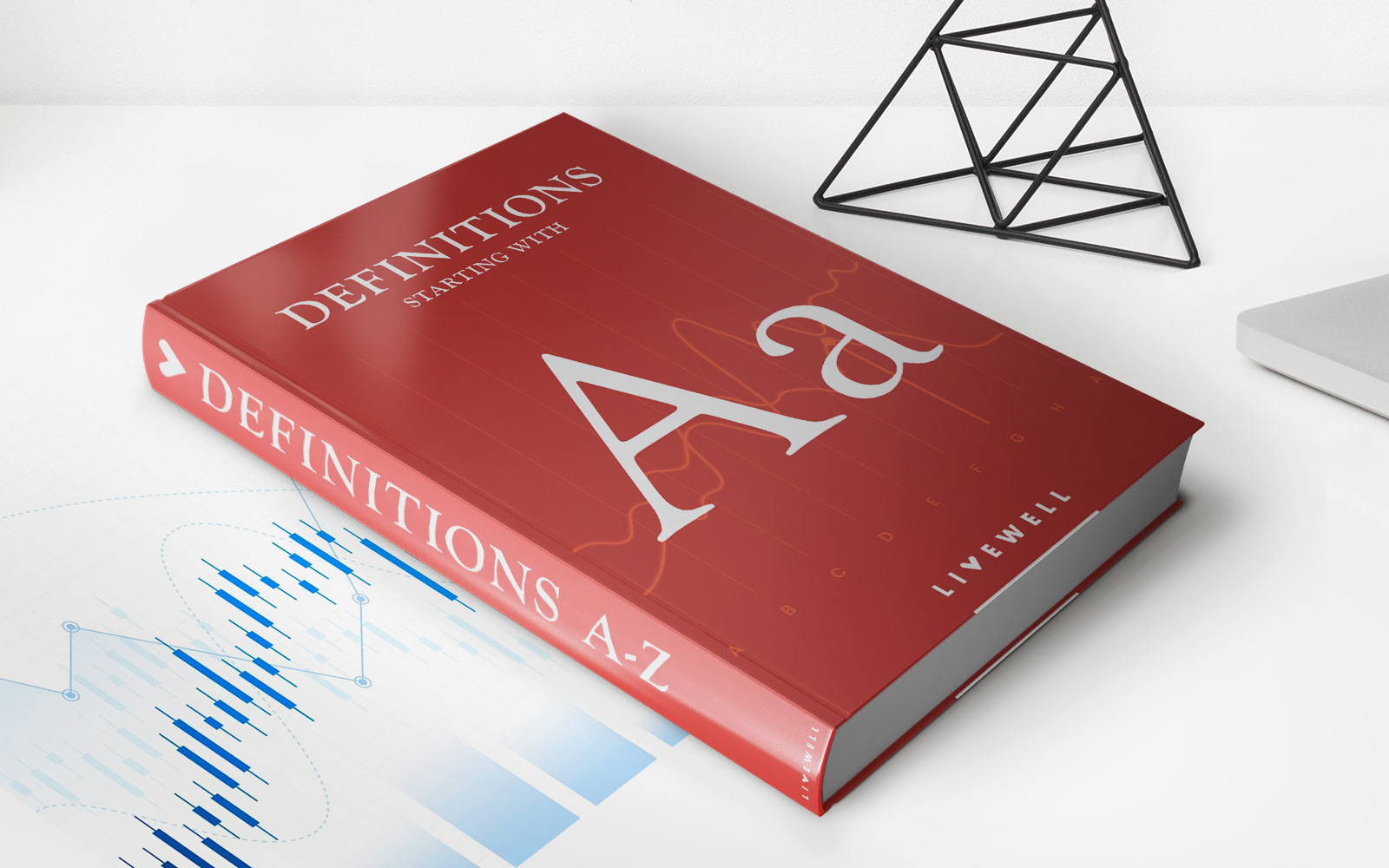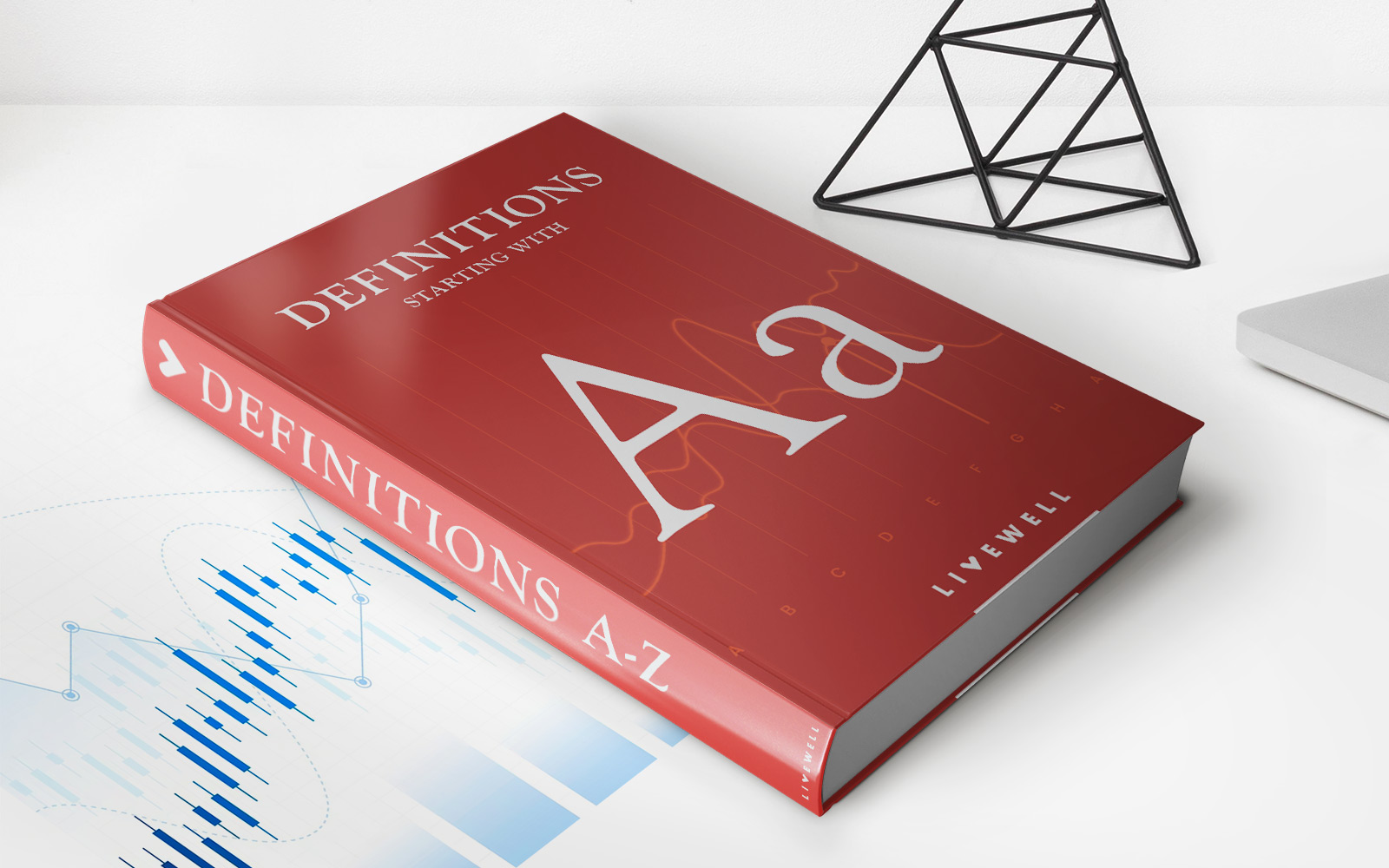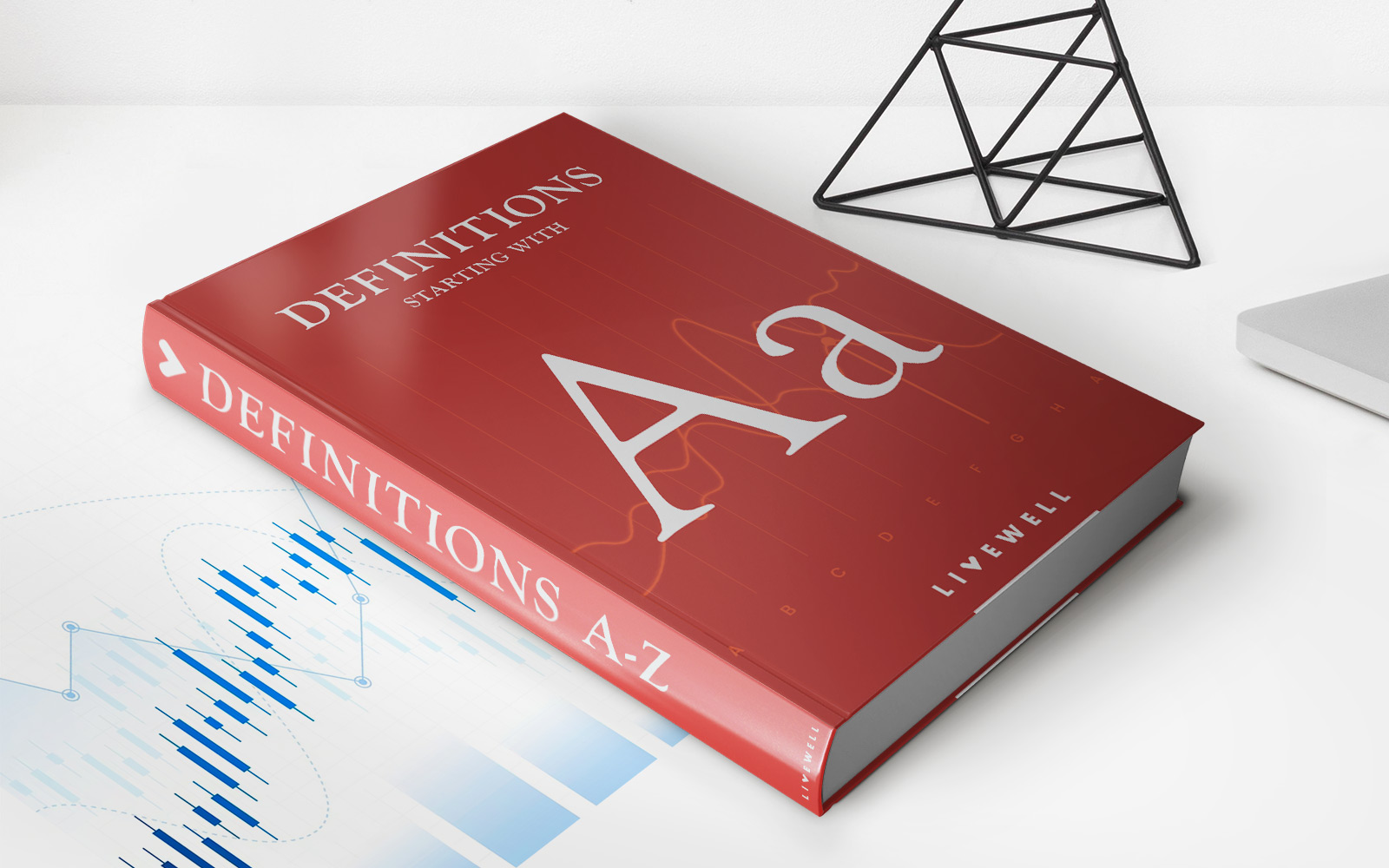Home>Finance>What Is Collateral Assignment Of Life Insurance


Finance
What Is Collateral Assignment Of Life Insurance
Published: November 22, 2023
Discover the benefits of collateral assignment of life insurance and how it can impact your finance. Gain valuable insights into this powerful financial strategy.
(Many of the links in this article redirect to a specific reviewed product. Your purchase of these products through affiliate links helps to generate commission for LiveWell, at no extra cost. Learn more)
Table of Contents
- Introduction
- Definition of Collateral Assignment of Life Insurance
- How Collateral Assignment Works
- Reasons for Using Collateral Assignment of Life Insurance
- Benefits and Drawbacks of Collateral Assignment of Life Insurance
- Comparison with Other Forms of Collateral
- Examples of Collateral Assignment of Life Insurance
- Important Considerations Before Using Collateral Assignment
- Conclusion
Introduction
When it comes to securing a loan, financial institutions often require borrowers to provide collateral as a form of security. Collateral helps mitigate the lender’s risk by providing an asset that can be seized and sold in the event of default. While real estate and vehicles are common forms of collateral, there is another valuable asset that can be used – life insurance.
In the world of finance, the collateral assignment of life insurance has gained popularity as a means of securing loans. This unique strategy allows borrowers to use the cash value or death benefit of their life insurance policy as collateral. By assigning the policy to the lender, the borrower can provide an additional layer of security while retaining ownership and control of the policy.
In this article, we will delve into the concept of collateral assignment of life insurance, understanding how it works, the reasons for using it, the benefits and drawbacks, as well as important considerations to keep in mind.
Additionally, we will compare collateral assignment with other forms of collateral and provide real-life examples to illustrate its practical application in various scenarios.
Before we proceed, it’s important to note that the details of collateral assignment can vary depending on the jurisdiction and terms of the insurance policy. It’s crucial for borrowers and policyholders to consult with their financial advisors and insurance providers to ensure they fully understand the implications and requirements of utilizing collateral assignment of life insurance.
Definition of Collateral Assignment of Life Insurance
Collateral assignment of life insurance refers to the process of using a life insurance policy as collateral for a loan or other financial obligation. When a borrower assigns their life insurance policy as collateral, they transfer a portion or all of their rights and benefits from the policy to the lender. This arrangement provides the lender with a form of security in case the borrower defaults on the loan.
Under a collateral assignment, the policyholder retains ownership of the policy and continues to pay the premiums. The assignee, typically the lender, receives the right to the policy’s cash value or death benefit as a means of recovering the outstanding debt in the event of default.
To create a collateral assignment, a written agreement known as a collateral assignment agreement is usually required. This agreement outlines the specifics of the assignment, including the amount of coverage assigned, the rights of the assignee, and the conditions for release of the collateral upon repayment of the loan.
It’s important to note that the collateral assignment of life insurance does not cancel or terminate the policy. The policy remains in force, and the beneficiary designation typically remains unchanged. In the event of the policyholder’s death, the death benefit is paid out as specified in the original policy contract.
It’s also worth mentioning that there are two types of collateral assignments for life insurance: outright assignment and conditional assignment. An outright assignment transfers all the policy rights and benefits to the assignee for the duration of the loan, while a conditional assignment only grants the assignee access to the policy’s value or death benefit if certain conditions, such as default on the loan, occur.
Now that we have a clear understanding of collateral assignment of life insurance, let’s explore how this process works in practice.
How Collateral Assignment Works
The process of collateral assignment of life insurance involves several steps and considerations. Here’s how it generally works:
- Evaluation of Loan Eligibility: The borrower applies for a loan and undergoes the usual evaluation process. The lender assesses the borrower’s creditworthiness, income, and other factors to determine loan eligibility.
- Identification of Collateral Options: If the lender requires collateral to secure the loan, the borrower explores different options. Life insurance policies with cash value or death benefits can be considered as potential collateral.
- Insurance Policy Examination: The borrower reviews their life insurance policy to determine the available cash value and death benefit. This information helps both the borrower and the lender assess the suitability of collateral assignment.
- Collateral Assignment Agreement: Once both parties agree to move forward with collateral assignment, a collateral assignment agreement is drafted. This agreement outlines the details of the assignment, including the amount of coverage assigned, the rights and obligations of the parties involved, and the conditions for release of the collateral.
- Notification to the Insurance Company: The borrower notifies their insurance company about the collateral assignment. The insurance company updates their records to reflect the assignee’s rights to the policy’s cash value or death benefit, as stipulated in the collateral assignment agreement.
- Ongoing Premium Payments: The borrower continues to pay the premiums on the life insurance policy to keep it active. Failure to do so could lead to policy termination and potentially affect the collateral assignment.
- Loan Repayment: The borrower is responsible for repaying the loan according to the terms and conditions set by the lender. If the borrower defaults on the loan, the lender has the right to access the assigned cash value or death benefit to recover the outstanding debt.
- Release of Collateral: Once the loan is fully repaid, the lender releases the collateral back to the borrower. At this point, the borrower regains full control and ownership of the life insurance policy.
It’s important to note that the process may vary slightly depending on the specific requirements of the lender and the insurance company. Additionally, the terms of the collateral assignment agreement will play a crucial role in determining the rights and obligations of both parties involved.
Now that we understand how collateral assignment works, let’s explore the reasons why individuals opt for this strategy.
Reasons for Using Collateral Assignment of Life Insurance
Collateral assignment of life insurance can be a valuable tool for borrowers and lenders alike. Here are some reasons why individuals choose to use this strategy:
- Access to Financing: Collateral assignment allows individuals who may not have traditional forms of collateral, such as real estate or valuable assets, to access financing. By utilizing the cash value or death benefit of their life insurance policy, borrowers can secure loans for various purposes, such as business expansion, education expenses, or medical bills.
- Lower Interest Rates: Lenders may offer lower interest rates for loans secured by collateral. The added security provided by the life insurance policy reduces the lender’s risk exposure, resulting in more favorable terms for the borrower.
- Easier Loan Approval: Collateral assignment can make loan approval easier for borrowers with less-than-perfect credit or limited income. The presence of collateral can mitigate some of the perceived risks for lenders, increasing the chances of loan approval.
- Retention of Policy Ownership and Control: Unlike other forms of collateral, such as selling an asset outright, collateral assignment of life insurance allows borrowers to retain ownership and control over their policy. They can continue to name beneficiaries, make changes to the policy, and access the policy’s cash value as needed, as long as the loan obligations are being met.
- Preservation of Policy Benefits: Assigning collateral does not cancel the life insurance policy. The original policy benefits, such as death benefit payouts, remain intact for the beneficiaries. This ensures that loved ones are financially protected in case of the policyholder’s untimely passing.
- Flexibility and Versatility: Collateral assignment can be used with various types of life insurance policies, including both permanent (whole life, universal life) and term life insurance. This provides borrowers with the flexibility to choose a policy that aligns with their financial goals and needs.
It’s important for borrowers to carefully evaluate their financial situation and assess whether collateral assignment is the right option for their needs. Taking into account the benefits and drawbacks of collateral assignment, as well as comparing it with alternative forms of collateral, can help borrowers make informed decisions.
Next, let’s explore the advantages and disadvantages of collateral assignment of life insurance.
Benefits and Drawbacks of Collateral Assignment of Life Insurance
Collateral assignment of life insurance offers several benefits and drawbacks for borrowers and lenders. Understanding these advantages and disadvantages can help individuals make informed decisions about utilizing this strategy. Let’s explore them:
Benefits:
- Improved Loan Terms: By offering collateral in the form of a life insurance policy, borrowers can often secure loans with better interest rates and terms compared to unsecured loans.
- Access to Higher Loan Amounts: Collateral assignment can help borrowers access higher loan amounts based on the value of their life insurance policy. This can be particularly beneficial for larger expenses or investments.
- Retain Policy Ownership: Collateral assignment allows borrowers to retain ownership and control of their life insurance policy. They can continue to make changes to the policy and access its benefits, such as cash value, while meeting loan obligations.
- Preservation of Policy Benefits: The life insurance policy’s original benefits, such as death benefit payouts, remain intact for the beneficiaries. This ensures that loved ones are financially protected, even if the policy is assigned as collateral.
- Flexibility and Versatility: Collateral assignment can be used with different types of life insurance policies, providing borrowers with flexibility in choosing a policy that suits their needs and financial goals.
Drawbacks:
- Reduced Cash Value and Benefit: Assigning collateral may restrict access to the policy’s cash value and limit the death benefit available to the policyholder during the loan term.
- Policy Termination Risk: If the borrower fails to meet the loan obligations or defaults, the policy may be terminated, leading to loss of coverage and potential financial consequences.
- Potential Loan Default Consequences: In the event of loan default, the lender can access the assigned cash value or death benefit, potentially impacting the financial protection for the borrower’s beneficiaries.
- Complexity and Administrative Requirements: Collateral assignment involves paperwork and administrative tasks, including drafting and executing a collateral assignment agreement, notifying the insurance company, and ensuring ongoing premium payments.
- Limitations on Policy Modifications: Depending on the terms of the collateral assignment agreement, borrowers may have restrictions on making changes to the policy, such as reducing coverage or surrendering the policy.
It’s essential for borrowers to carefully consider these benefits and drawbacks in the context of their specific financial situation and goals. Consulting with financial advisors and insurance professionals can provide valuable guidance to make an informed decision.
Next, let’s compare collateral assignment of life insurance with other forms of collateral to better understand its advantages and limitations.
Comparison with Other Forms of Collateral
Collateral assignment of life insurance offers distinct advantages and considerations compared to other forms of collateral. Let’s compare it to some common forms of collateral:
Real Estate:
Real estate is a traditional form of collateral widely used in lending. While real estate offers the potential for long-term appreciation, it can be financially burdensome due to property taxes, maintenance costs, and market fluctuations. Moreover, using real estate as collateral may involve complex legal processes and lengthy evaluation periods. In contrast, collateral assignment of life insurance provides a quicker and more straightforward solution, especially for those without real estate assets.
Vehicles:
Vehicles are another common form of collateral. While they are easily identifiable and possess monetary value, vehicles depreciate over time. Additionally, vehicles require ongoing maintenance and are subject to wear and tear. Unlike vehicles, a life insurance policy’s value is not dependent on physical assets, making it an attractive option for those who do not own valuable vehicles or wish to preserve their vehicle’s daily utility.
Securities:
Securities, such as stocks or bonds, can be used as collateral. However, they are subject to market volatility, and their value can fluctuate considerably. Additionally, using securities as collateral may require transferring ownership or creating a margin account, which can involve additional fees and restrictions. Collateral assignment of life insurance offers stability, as the policy’s cash value remains relatively secure, regardless of market conditions.
Savings Accounts:
Savings accounts or certificates of deposit (CDs) can be used as collateral, providing a low-risk option for lenders. However, tying up savings in collateral may limit accessibility to those funds and reduce financial flexibility. Collateral assignment of life insurance can offer an alternative solution, allowing borrowers to access funds while keeping their savings intact.
It’s important to note that the suitability of collateral assignment versus other forms of collateral may depend on an individual’s unique circumstances and preferences. Assessing the advantages, drawbacks, and requirements of different collateral options is crucial in determining the best choice for a particular situation.
Next, let’s explore some practical examples of collateral assignment of life insurance to illustrate its application in real-life scenarios.
Examples of Collateral Assignment of Life Insurance
Collateral assignment of life insurance can be used in various real-life situations to secure loans and meet financial obligations. Here are a few examples:
1. Small Business Loan: A small business owner requires capital to expand their operations. Instead of offering personal assets or seeking a business loan without collateral, they choose to assign the cash value of their life insurance policy as collateral. This allows them to access favorable loan terms and maintain ownership of their life insurance policy while growing their business.
2. Education Financing: A parent wants to fund their child’s college education but does not have sufficient savings or assets to provide as collateral. By assigning the death benefit of their life insurance policy as collateral, the parent can secure a loan to cover tuition and other educational expenses. This approach allows them to borrow at lower interest rates and preserve their other assets for future needs.
3. Medical Expenses: A borrower faces unexpected medical expenses that are not fully covered by insurance. They assign the cash value of their life insurance policy as collateral to secure a loan and cover the medical bills. This enables them to get the necessary treatment without depleting their savings or incurring high-interest debt.
4. Estate Planning: An individual wants to ensure their loved ones are adequately provided for in case of their untimely passing. They assign the death benefit of their life insurance policy as collateral to secure a loan and establish an estate plan. This allows them to create a tax-efficient strategy while providing immediate financial support to their beneficiaries.
5. Debt Consolidation: A borrower has multiple outstanding debts with high-interest rates. They decide to assign the cash value of their life insurance policy as collateral to secure a consolidation loan. This allows them to combine their debts into a single loan with more favorable terms, such as lower interest rates and manageable monthly payments.
These examples demonstrate the versatility and practicality of collateral assignment of life insurance in various financial scenarios. It provides a viable option for individuals and businesses to access funds, manage expenses, and meet financial goals while leveraging the financial protection provided by their life insurance policies.
Before pursuing collateral assignment, it’s crucial to thoroughly understand the terms and conditions of the loan and collateral assignment agreement. Seeking guidance from financial advisors and insurance professionals can help borrowers make informed decisions and ensure the best outcome for their specific circumstances.
In the next section, we will explore important considerations that individuals should keep in mind before using collateral assignment of life insurance.
Important Considerations Before Using Collateral Assignment
Before deciding to use collateral assignment of life insurance, it is essential to consider the following factors:
Loan Terms and Repayment:
Thoroughly review the terms and conditions of the loan, including the interest rate, repayment period, and any associated fees. Determine if the loan terms align with your financial capabilities and goals. It’s crucial to have a clear understanding of the repayment schedule and ensure it is manageable within your budget.
Impact on Policy Benefits:
Understand how assigning collateral will affect your life insurance policy. Evaluate the potential impact on the policy’s cash value, death benefit, and other policy features. Determine if the reduction in benefits is acceptable in relation to the loan amount and the financial protection provided to your beneficiaries.
Insurance Policy Review:
Review your life insurance policy in detail to understand its provisions, restrictions, and rights. Familiarize yourself with the policy’s cash value accumulation, surrender charges, and any other contractual obligations. Ensure that the policy is eligible for collateral assignment and that you comply with all requirements set by the insurance company.
Risk of Policy Termination:
Be aware that failing to meet loan obligations can result in policy termination, potentially leaving you without coverage and potential financial consequences. Consider your ability to meet the loan payments and have a contingency plan in case of unforeseen circumstances to mitigate this risk.
Professional Guidance:
Seek advice from financial advisors and insurance professionals who can provide insight into the pros and cons of collateral assignment of life insurance. They can help you evaluate your specific needs, assess the impact on your financial situation, and explore alternative options that may better suit your circumstances.
Legal and Tax Implications:
Understand the legal and tax implications associated with collateral assignment based on your jurisdiction. Consult with legal and tax professionals to ensure compliance with applicable laws and regulations. Be aware of any potential tax consequences, such as potential taxable events or changes in the insurance policy’s tax status.
By carefully considering these factors, you can make an informed decision about whether collateral assignment of life insurance is the right strategy for your financial needs. It’s important to conduct thorough research, weigh the benefits and drawbacks, and consult with professionals to ensure you are making the best choice for your individual circumstances.
In the concluding section, we will summarize the key points and emphasize the significance of due diligence when utilizing collateral assignment of life insurance.
Conclusion
Collateral assignment of life insurance can be a valuable tool for borrowers and lenders seeking to secure loans and meet financial obligations. By leveraging the cash value or death benefit of a life insurance policy, individuals can access financing with favorable terms and retain ownership and control over their policy.
However, utilizing collateral assignment requires careful consideration and due diligence. It is essential to assess the benefits and drawbacks, compare it with alternative forms of collateral, and evaluate its impact on policy benefits and repayment obligations. Seeking guidance from financial advisors and insurance professionals is crucial to ensure informed decision-making and a thorough understanding of the process and implications.
Understanding the terms and conditions of the loan, the collateral assignment agreement, and the policy itself is paramount. Regular reviews of the insurance policy and ongoing premium payments are necessary to maintain coverage and prevent policy termination. Additionally, individuals should stay aware of legal, tax, and compliance requirements associated with collateral assignment based on their jurisdiction.
By responsibly utilizing collateral assignment, individuals can access financing for various purposes while protecting their loved ones through the preservation of policy benefits. This strategy offers flexibility and versatility, allowing borrowers to meet their financial goals without sacrificing ownership and control of their life insurance policies.
Ultimately, the decision to use collateral assignment of life insurance should align with individual financial goals and risk tolerance. With careful planning, proper guidance, and a thorough understanding of the process, collateral assignment can be a valuable tool in managing finances and achieving financial objectives.
It’s important to always consult with professionals and conduct thorough research before proceeding with collateral assignment of life insurance to ensure the best outcome for your specific circumstances.














